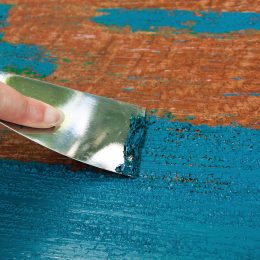
Ready for disaster – checking off the items on the emergency preparedness form
By Richard Halcomb
Emergency situations, such as severe storms, floods, hazardous chemical spills, or other disasters, can and do happen, often without much warning. So, it’s smart to have a pre-assembled emergency kit ready to go — just in case.
To help you create your own emergency kit, here is a suggested supply list along with a few tips. Depending on your family’s needs, you may want to include other items in addition to the ones mentioned.
• Nonperishable, easily prepared food. Include enough to last three days minimum for every household member. Include provisions for any infants and pets in your household. If you include canned food without pull-top lids, add a manual can opener.
• Water. Include at least three days’ supply for every household member, including children and pets. Plan on a minimum of one gallon per household member per day for drinking and sanitary purposes. Unopened commercially bottled water is ideal. You can also store water in sanitized, unbreakable food-grade containers if you replace the water at least every six months.
• Medical supplies. Include at least seven days’ worth of essential medications and medical supplies, plus a well-stocked first aid kit and some emergency blankets.
• Personal hygiene and sanitation items. This should include a five-gallon bucket, toilet paper, moist wipes, paper towels, and trash bags. If you have an infant or toddler, be sure to include diapers!
• Tools. Include a couple of flashlights, a battery-operated weather radio, extra sets of batteries for battery-operated devices, some fully charged cell phone battery packs, a multipurpose tool, a wrench or pliers for shutting off utilities, and a whistle in case you would need to sound for help.
• Important documents. Include copies of IDs, birth certificates, insurance policies, and prescriptions, stored in a separate waterproof container. Also include current photos of every household member, an emergency contact list, important medical information, a local map, some cash and change, and some pens and paper.
• Pet items. Include dishes, carriers, leashes, collars or harnesses, ID tags, medications, newspapers or disposable litter boxes, and proof of current vaccinations. In addition to having basic pet items in your emergency kit, have a plan in place for temporary pet housing.
Other items you may find useful include plastic utensils, paper plates and cups, N95 or surgical masks, disinfectant, rain gear, towels, waterproof matches, a tent, sleeping bags, two-way radios, children’s activities, plastic sheeting, scissors, duct tape, work gloves, and tools and supplies for securing your home.
Store your emergency supplies in sturdy water-resistant containers such as plastic totes, and ensure each container is light enough to carry. Be sure that every member of your household knows where the emergency supplies are stored and that everyone knows never to remove items for everyday use. Go through your kit every six months to review the contents and replace any outdated items.
Visit your local Do it Best location or go online to doitbest.com for the best in home improvement products, including many essentials for household emergency kits!
Richard Halcomb is co-owner of Halcomb Home Center in Versailles, Indiana, and is a member-owner of Do it Best Corp., a Fort Wayne-based cooperative of thousands of hardware stores, home centers and lumberyards throughout the United States and around the world.
This article is for informational purposes only. Electric Consumer and Do it Best Corp. assume no liability for the accuracy or completeness of its content, or for injuries, property damage, or the outcome of any project.



